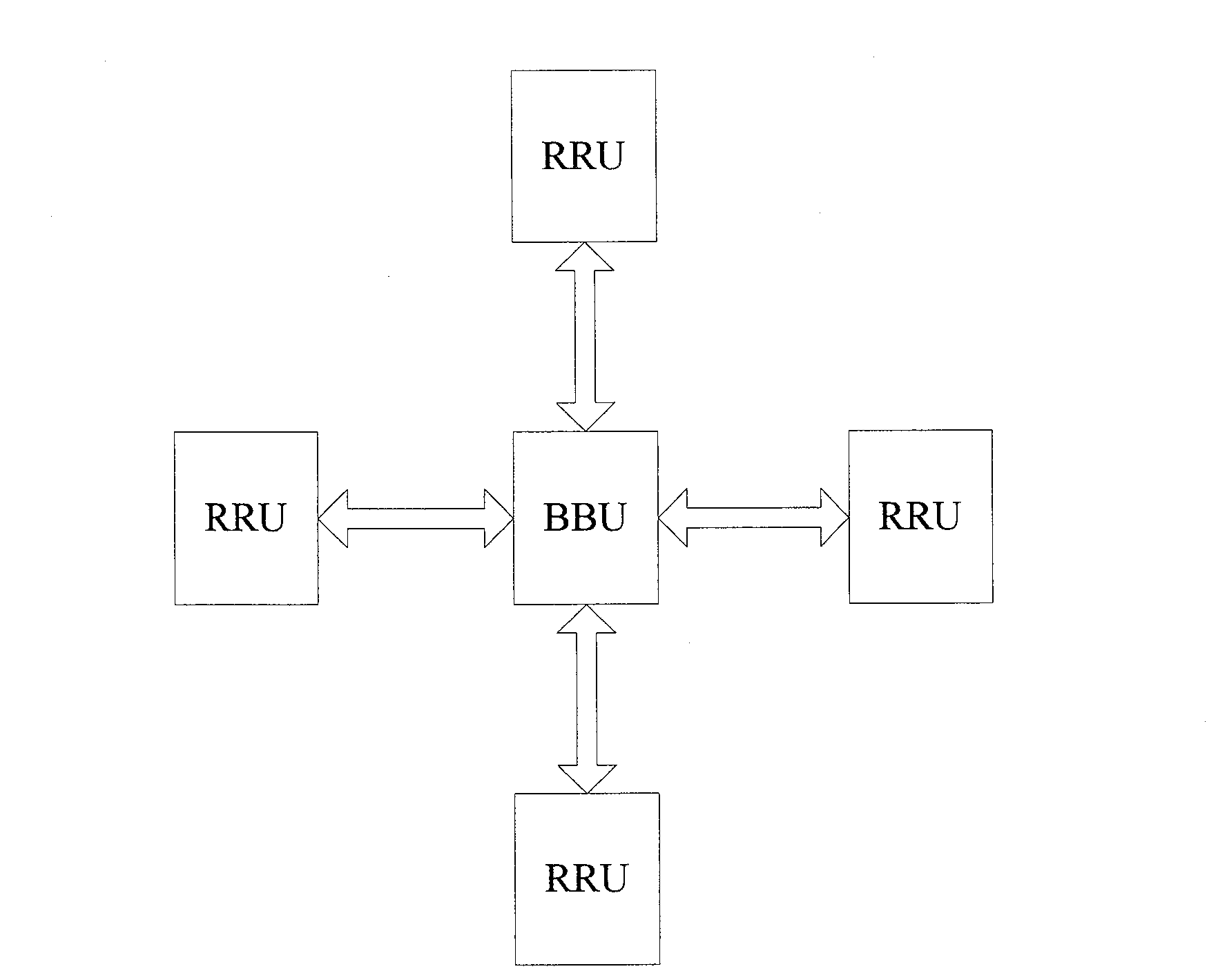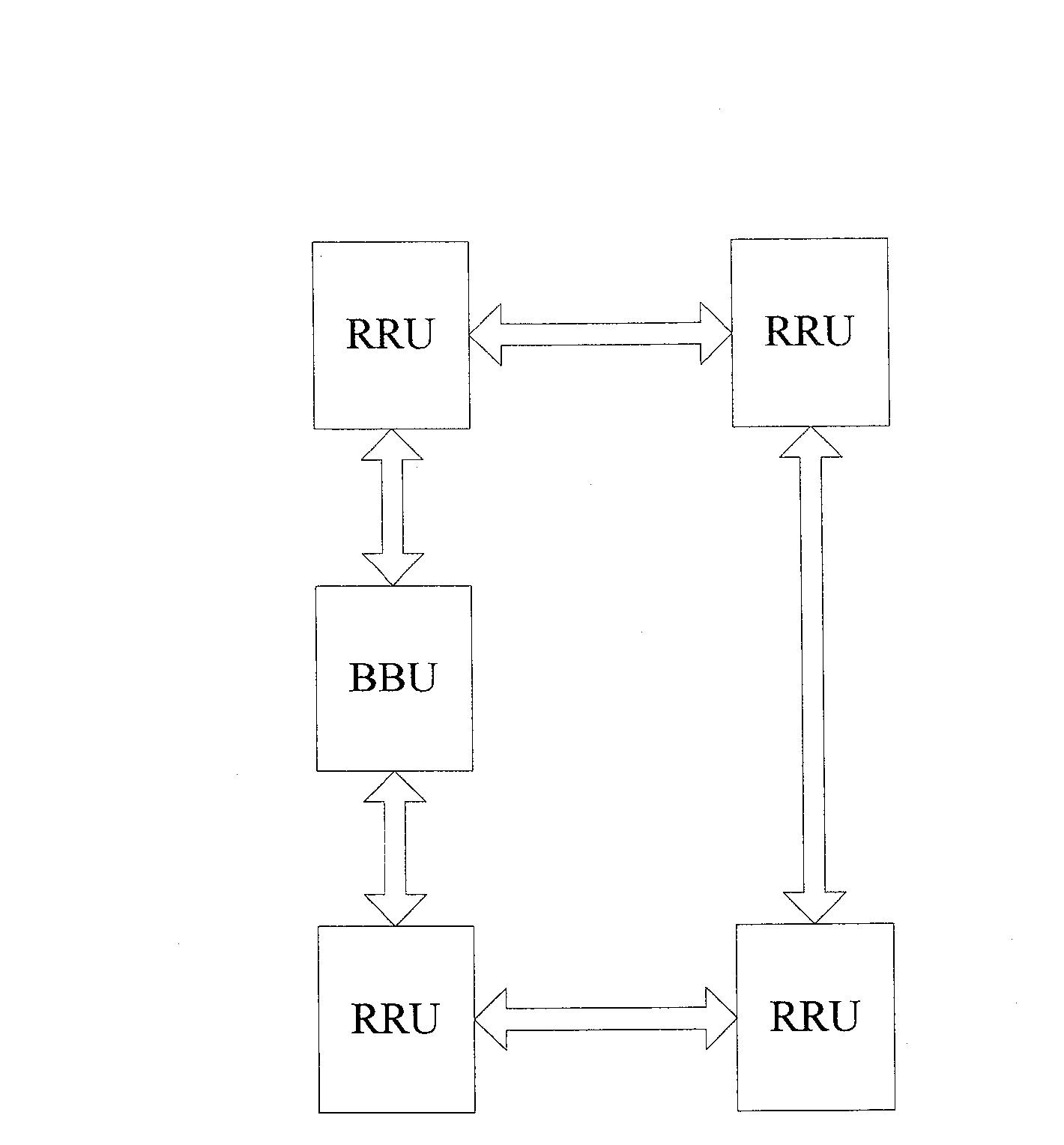Master-slave relation deterministic method for far-end radio frequency unit in wireless communication system
A remote radio frequency unit, wireless communication system technology, applied in wireless communication, communication between multiple stations, radio/inductive link selection and arrangement, etc., can solve problems such as inability to guarantee accuracy and time-consuming
- Summary
- Abstract
- Description
- Claims
- Application Information
AI Technical Summary
Problems solved by technology
Method used
Image
Examples
Embodiment 1
[0030] When chain networking is used, the method for determining the RRU master-slave relationship is as follows:
[0031] 1. After the BBU is powered on successfully, use the fiber-optic clock to extract the priority indicator signal, and send the signal to the RRU connected to the BBU. The priority indicator signal can be a clock symbol inserted on the line, and the clock symbol has Priority, and the clock mark is sent from the baseband radio frequency interface of the BBU;
[0032] 2. The RRU receives the priority indication signal, sets the link port receiving the priority indication signal as the slave flag, and sets the other link port as the master flag. The link port with the master flag set is the master port, and the link port with the slave flag set is the slave port. In order to ensure the reliability of setting the flag, it can be pre-set to set the link port connected to the BBU as the slave flag after the above-mentioned RRU receives a certain number of priorit...
Embodiment 2
[0036] When the ring networking mode is used, the method for determining the master-slave relationship of the RRU is as follows:
[0037] 1. After the BBU is powered on successfully, use the channel-associated clock of the optical fiber to extract the priority indication signal, and send the signal to the RRU connected to the BBU. The priority indication signal may be a clock mark inserted on the line, the clock mark has a priority, and the clock mark is sent from the baseband radio frequency interface of the BBU. Since both ports of the BBU are connected to the RRU, only one port of the BBU sends a priority indication signal in this step, and the other port does not send a priority indication signal or sends a priority indication signal with a lower priority level, and the RRU connected to it receives a priority indication signal. The master-slave relationship is not determined for priority indication signals with lower priority levels;
[0038] 2. If the device receiving th...
Embodiment 3
[0042] When the star networking mode is adopted, the method for determining the master-slave relationship of the RRU is as follows:
[0043] 1. After the BBU is successfully powered on, use the fiber-optic clock to extract the priority indication signal and send it to all RRUs connected to it at the same time. The priority indication signal can be a clock mark inserted on the line, and the clock mark has priority. And the clock flag is sent from the baseband radio frequency interface of the BBU;
[0044] 2. After the RRU receives the priority indication signal, it sets the link port receiving the priority indication signal as the slave flag, and sets the other link port as the master flag. The link port with the master flag set is the master port, and the link port with the slave flag set is the slave port. In order to ensure the reliability of setting the flag, it can be pre-set to set the link port connected to the BBU as the slave flag after the above-mentioned RRU receive...
PUM
 Login to View More
Login to View More Abstract
Description
Claims
Application Information
 Login to View More
Login to View More - R&D
- Intellectual Property
- Life Sciences
- Materials
- Tech Scout
- Unparalleled Data Quality
- Higher Quality Content
- 60% Fewer Hallucinations
Browse by: Latest US Patents, China's latest patents, Technical Efficacy Thesaurus, Application Domain, Technology Topic, Popular Technical Reports.
© 2025 PatSnap. All rights reserved.Legal|Privacy policy|Modern Slavery Act Transparency Statement|Sitemap|About US| Contact US: help@patsnap.com



